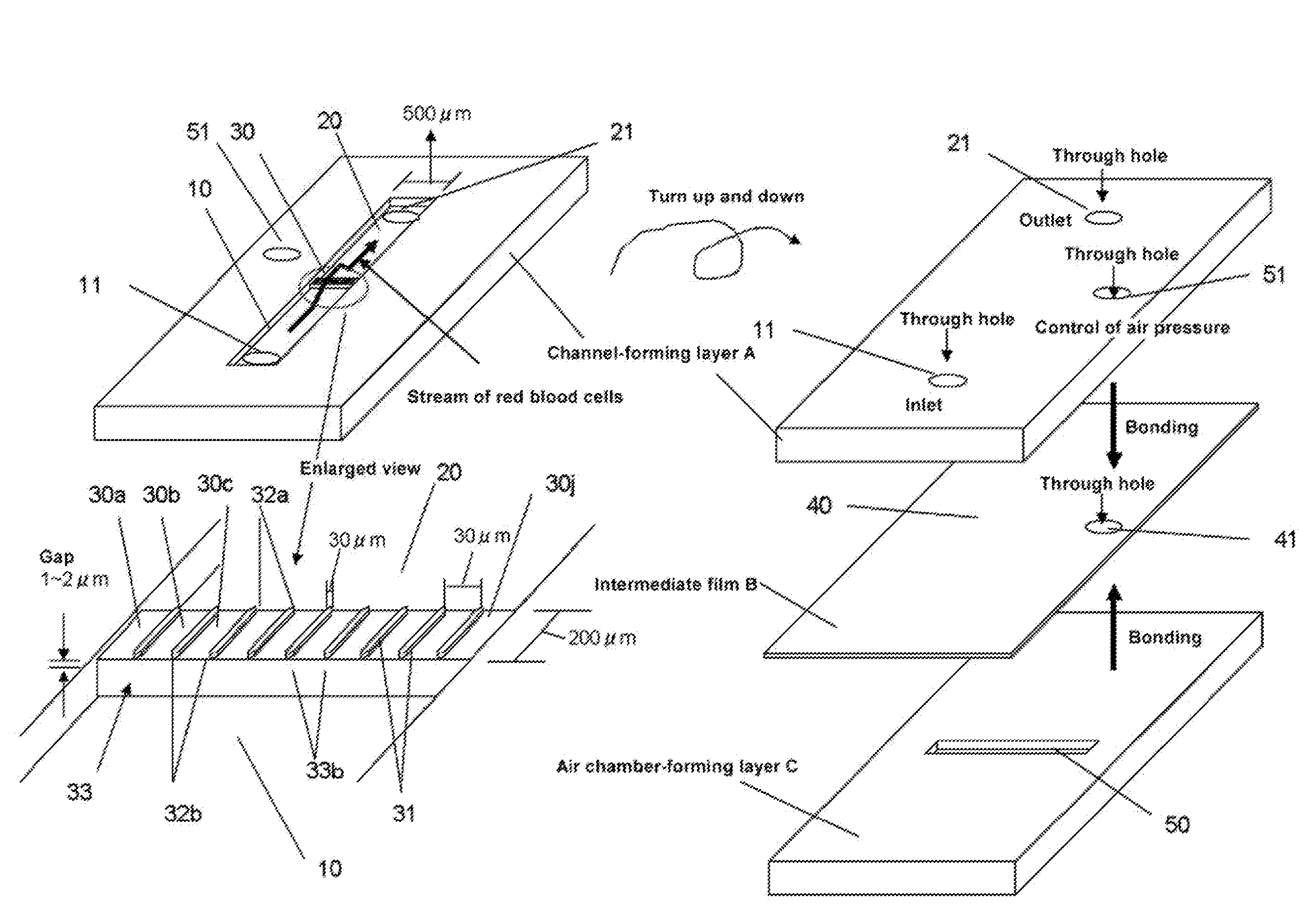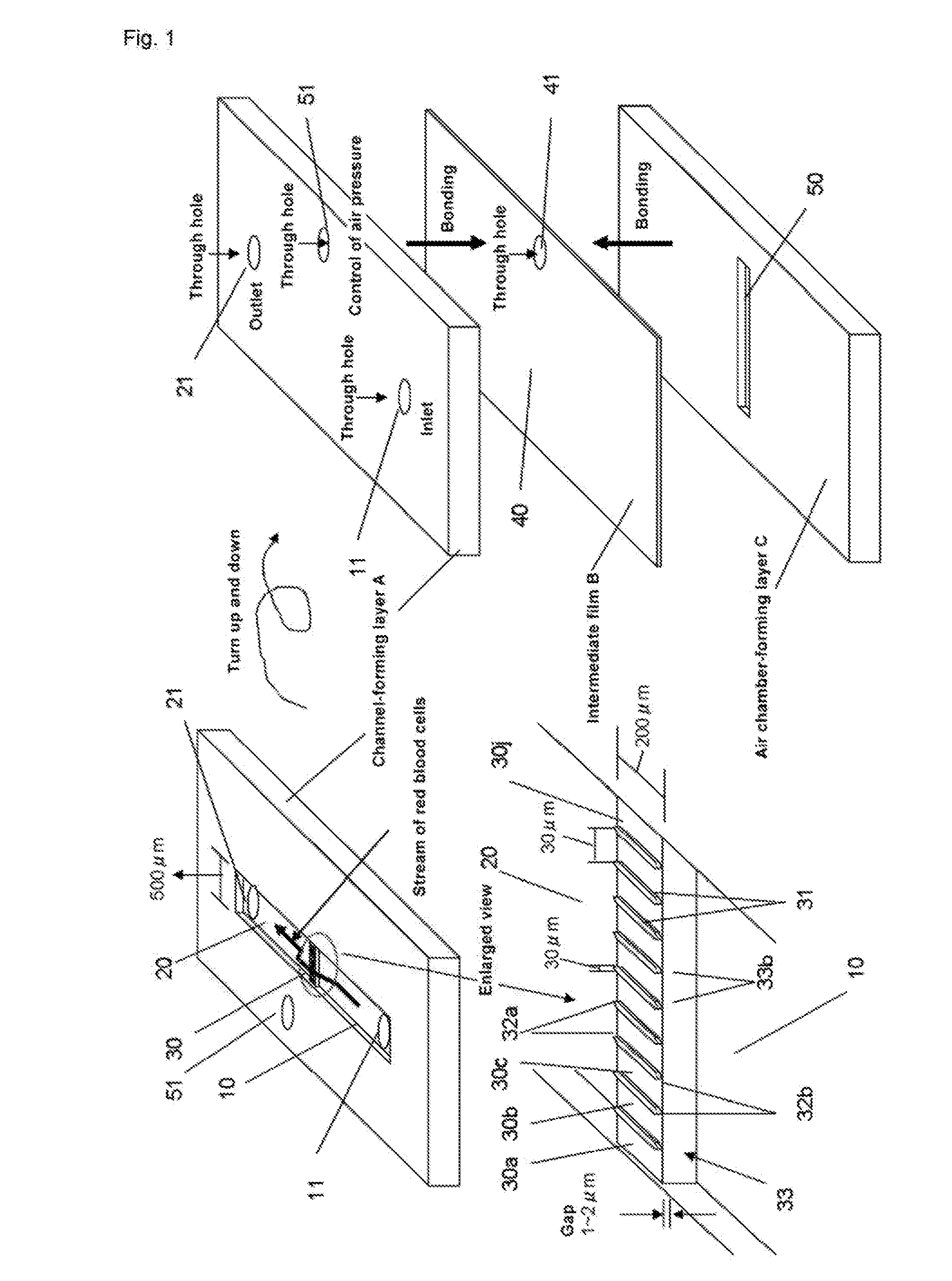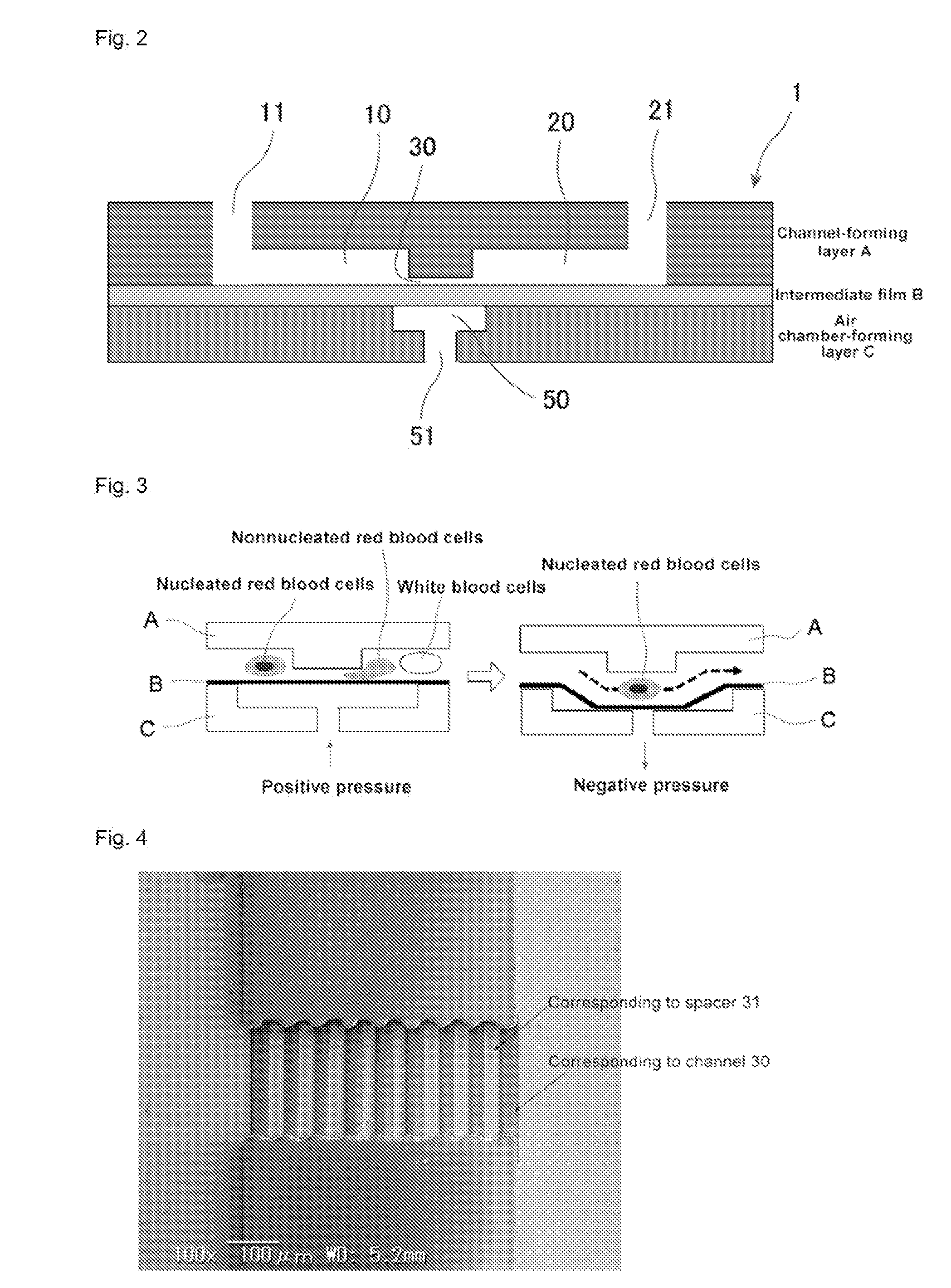Recovering nucleated red blood cells and method for concentrating and recovering nucleated red blood cells
a nucleated red blood cell technology, applied in the field of recovering can solve the problems of unavoidable risks of injury and miscarriage of the fetus, place physical and mental burdens on the mother, and fetal etc., to achieve the effect of allowing concentration and recovery and high efficiency of nucleated red blood cells
- Summary
- Abstract
- Description
- Claims
- Application Information
AI Technical Summary
Benefits of technology
Problems solved by technology
Method used
Image
Examples
embodiment 1
Chip Preparation
[0097]The series of steps up to completion of a chip of polydimethylsiloxane (PDMS) can be roughly divided into designing the channel pattern, preparation of a mask for photolithography, preparation of a channel casting mold, preparation of a PDMS channel layer employing the casting mold, and bonding the various layers.
Designing the Channel Pattern
[0098]The channel pattern was constructed with Illustrator (Adobe) on a PC.
Preparation of a Mask for Photolithography
[0099]The channel pattern was printed on a transparent OHP film. This film was adhered to a transparent glass sheet and a mask for photolithography was completed.
Preparation of a Channel Casting Mold
[0100]Photocuring resist SU-8 (US Micro Chem Corp.) was employed as the material of the channel casting mold. A six-inch silicon wafer with a single surface polished to a mirror finish (CZ-N, Shin-Etsu Chemical Co., Ltd., 625 μm in thickness, crystal plane ) was employed as the substrate. The surface of the substr...
embodiment 2
[0108]Nucleated red blood cells were concentrated and recovered from maternal blood by the following method using the chip fabricated in Embodiment 1.
[0109]Time was required for the nucleated red blood cells to concentrate on the chip with the quantities of blood collected. Thus, a step to reduce the quantity of blood was necessary. Accordingly, density gradient centrifugal separation was conducted to concentrate nucleated red blood cells and reduce the quantity of blood
1. Density Gradient Centrifugal Separation
[0110]Maternal blood (6.0 mL to 7.0 mL) is collected with a pipette and transferred in two parts to a centrifuge tube. The quantity of maternal blood collected is affected by individual differences in blood viscosity and varied somewhat. However, 6.0 mL or more is consistently collected. The maternal blood that had been divided into two parts is diluted two-fold with a 0.9% (g / mL) NaCl aqueous solution. In a separate centrifuge tube, a density gradient is prepared with Percol...
embodiment 3
[0119]The white blood cell and red blood cell elimination rates were determined using the chip of Embodiment 2. First, the original white blood cell count and red blood cell count of 1 mL of maternal blood are determined by FACS. Then, an identical 1 mL of maternal blood is passed over a chip with a microgap of 1.0 μm and the white blood cell count and red blood cell count of the solutions that passed through and are recovered are determined by FACS. The number of blood cells in the solution that passed through the gap is divided by the blood cell count in the original maternal blood and multiplied by 100 to obtain the passage rate (%). The capture rate is calculated as 100−the passing rate. These are determined for the red blood cells and white blood cells. The remaining conditions are identical to those in Embodiment 2.
[0120]The results are given below. The original red blood cell count in 1 mL of maternal blood was 3.63×109. The red blood cell count following passage was 3.40×109...
PUM
| Property | Measurement | Unit |
|---|---|---|
| length | aaaaa | aaaaa |
| width | aaaaa | aaaaa |
| width | aaaaa | aaaaa |
Abstract
Description
Claims
Application Information
 Login to View More
Login to View More - R&D
- Intellectual Property
- Life Sciences
- Materials
- Tech Scout
- Unparalleled Data Quality
- Higher Quality Content
- 60% Fewer Hallucinations
Browse by: Latest US Patents, China's latest patents, Technical Efficacy Thesaurus, Application Domain, Technology Topic, Popular Technical Reports.
© 2025 PatSnap. All rights reserved.Legal|Privacy policy|Modern Slavery Act Transparency Statement|Sitemap|About US| Contact US: help@patsnap.com



